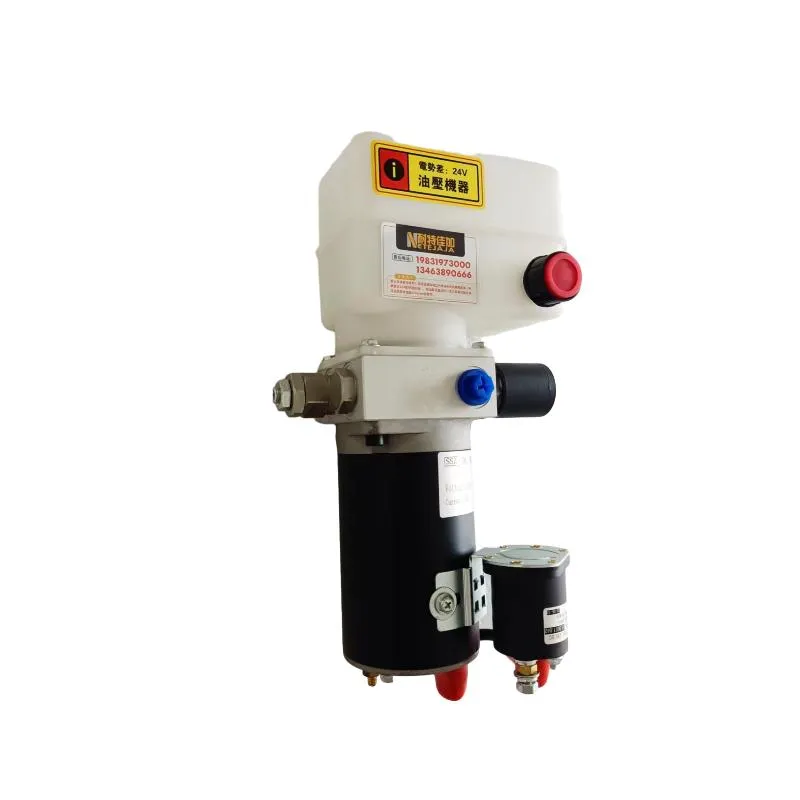Nov . 10, 2024 08:22 Back to list
Hydraulic Steering Cylinder Manufacturing Process and Quality Control Techniques
Exploring the Hydraulic Steering Cylinder Factory Advancements in Precision Engineering
Hydraulic steering cylinders play a pivotal role in enabling smooth and precise steering operations in various vehicles and machinery, from cars and trucks to agricultural and industrial equipment. As the demand for efficient and responsive steering systems rises, the hydraulic steering cylinder factory has become a focal point for innovation and advancements in engineering. This article delves into the intricacies of hydraulic steering cylinder manufacturing, exploring the processes, technologies, and quality controls that drive this vital industry forward.
Understanding Hydraulic Steering Cylinders
At the heart of a hydraulic steering system is the hydraulic steering cylinder, which is responsible for converting hydraulic pressure into linear motion. This mechanism allows drivers to maneuver their vehicles with minimal physical effort, enhancing both safety and comfort. The basic design consists of a cylindrical housing filled with hydraulic fluid, a piston that moves within the cylinder, and various seals that prevent leaks.
The functionality and reliability of hydraulic steering cylinders are crucial, making precision in manufacturing essential. Each component must adhere to strict tolerances to ensure optimal performance; any deviation could lead to failure. Thus, factories specializing in hydraulic steering cylinders must employ advanced manufacturing techniques, precise machinery, and skilled technicians.
Manufacturing Processes
The production of hydraulic steering cylinders begins with the selection of high-quality raw materials, typically including various grades of steel and aluminum
. These materials are chosen for their strength, durability, and resistance to corrosion, which are critical factors given the high-pressure environments these cylinders operate in.Once materials are selected, the manufacturing process initiates with machining operations. CNC (Computer Numerical Control) machines play a significant role in this phase, allowing for precision cutting, drilling, and milling of components. CNC technology ensures that each part is manufactured to exact specifications, promoting consistency and efficiency.
After machining, the components undergo surface finishing processes, such as grinding and polishing. These steps are essential to achieve the smooth surfaces required for proper sealing and to reduce friction during operation. Any blemish or imperfection can drastically affect the performance of the steering system.
hydraulic steering cylinder factory

Following surface treatment, the assembly of the hydraulic steering cylinder commences. Skilled technicians meticulously assemble each component using hydraulic seals, piston rods, and end caps. This stage requires extensive attention to detail, as the integrity of seals is paramount to prevent fluid leakage and ensure the longevity of the cylinder.
Quality Assurance and Testing
In a hydraulic steering cylinder factory, quality assurance is not merely an afterthought; it is embedded in every stage of the manufacturing process. Factories implement stringent quality control measures, utilizing advanced inspection tools and techniques to verify that each component meets industry standards.
One significant aspect of quality assurance involves pressure testing the finished cylinders. These tests simulate operating conditions, ensuring the cylinders can withstand the pressures they will encounter in the field. Any failures detected during this phase lead to further analysis and rectification, reinforcing the factory's commitment to quality.
Furthermore, many factories are now incorporating automation and robotics into their production lines. These technologies not only enhance efficiency but also improve precision in manufacturing, thus minimizing the risk of human error. As the industry evolves, factory operators are continuously exploring new methodologies to improve production capabilities while maintaining uncompromising standards of quality.
Conclusion
The hydraulic steering cylinder factory represents a critical intersection of innovation, precision engineering, and quality assurance. As demands for better vehicle performance and safety continue to escalate, these factories are poised to play a vital role in shaping the future of hydraulic systems. Through advanced manufacturing technologies, skilled craftsmanship, and rigorous testing, hydraulic steering cylinder manufacturers ensure that their products enhance the driving experience and contribute to the overall safety of vehicles across various sectors.
In conclusion, the ongoing advancements within the hydraulic steering cylinder factory underscore the importance of precision engineering in today’s fast-paced automotive landscape. As the industry continues to grow, these facilities will undoubtedly remain at the forefront, driving innovations that enhance vehicle functionality and safety.
-
1.5 Ton Flipping Oil Cylinder 70/82-40-217-720-Hebei Shenghan Hydraulic Machinery|Precision Hydraulic Cylinder,Custom Hydraulic Solutions
NewsAug.29,2025
-
1.5 Ton Flipping Oil Cylinder 70/82-40-217-720 | Hebei Shenghan Hydraulic Machinery Co., Ltd.
NewsAug.29,2025
-
High-Precision [90/105-50-180-480] Industrial Component | Durable & Reliable
NewsAug.27,2025
-
High-Performance Set of 50/60-45-290 471 | Durable & Reliable Components
NewsAug.26,2025
-
Efficient Pallet Truck Power Units - Reliable Hydraulic Systems
NewsAug.25,2025
-
Premium Set of 50/60-45-290 471 Parts | High Performance
NewsAug.24,2025
